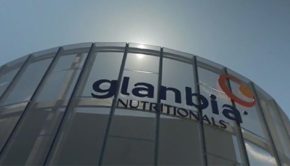Making designs on consumer behaviour

A consumer’s mindset will determine how they interact with a shop. So why not utilise this knowledge to ensure a shop has been designed around their every need?
15 September 2010

It is important that a store – regardless of its size – effectively advertises the location of all its products to make it easy for consumers to find what they are looking for. In fact, 52% of consumers admit to preferring larger stores because they have more options so it is extremely important that they can navigate through the store easily to find what they need. ShelfLife conducted a survey to find out what consumers’ shopping habits are concerning the store layout. Moreover, observations and shop-a-longs were performed in order to develop a full understanding of what is needed to effectively create a properly designed store.
Examining shopping habits
Before coming to the store, 47% of shoppers make a list and want to get what they need quickly. Therefore, it must be visually easy for them to find what they need and not have to wander around the store like a mouse in a maze. The other 53% will go to the store with hopes that they can figure out what they need when they get there. Those without a list are usually more vulnerable to make impulse buys – 49% of consumers admitted to buying more than they needed because of the product placement. For example, it is important that the promotional items are in strategic places, possibly at the beginning and the end of each isle.
Consumers will automatically look at the promotion because it is in eyesight, even if they don’t stop. Also, 71% of consumers take the time to look at every shelf to find the best value. Therefore, it is important to know where and what the consumer is looking for to make it easier for them to find it.
A new technology, the Eyetracker, has been developed to track a shopper’s eye motion to know exactly where and what their eye is looking at. Tobii, a world leader in eyetracking and control, acknowledges the importance of attracting shopper’s visual attention. According to Henrik Eskilsson, CEO of Tobii, “eye tracking provides unique methods to understand in-store interaction between consumers and the shelf. Stores can collect new insights about attention, saliency, interest, gaze path, and impact of brand, packaging and placement. Moreover, it can measure spontaneous reactions and behaviours and avoid results biased by familiarity or the social desirability effect.” This technology can help stores design the most effective store layout and product placement to maximize sales.
Following the consumer’s gaze
Eyetracker will also help stores learn what the consumer looks at in terms of figuring out where to go. If a consumer looks to the right, instead of the left when they walk in, it would be most effective to place promotional items and store directions in that general direction.
Knowing consumers’ shopping habits and considering that when designing the layout of a store can help maximize sales. Make sure that your store is effectively designed to make it easy for consumers to find what they need.
Applegreen fuels design inspiration
Exhibit Design Group, the company behind the layout of six new Applegreen ‘super-service stations’ tell Gillian Hamill how they achieved slick, functional spaces in a tight timeframe.
 Dubbed super-service stations, the new Applegreen service areas on the M1 at Lusk and Castlebellingham, and the M4 at Enfield, will include fuelling areas, cafés, rest areas, showers and playgrounds. Although there are only three locations, the €70 million investment by Applegreen will effectively create six stores – on either side of the road – and an impressive total of 300 new jobs.
Dubbed super-service stations, the new Applegreen service areas on the M1 at Lusk and Castlebellingham, and the M4 at Enfield, will include fuelling areas, cafés, rest areas, showers and playgrounds. Although there are only three locations, the €70 million investment by Applegreen will effectively create six stores – on either side of the road – and an impressive total of 300 new jobs.
A mammoth task
A potentially daunting task then for any designer to contemplate. Especially when considering two key factors; the large size of the sites – either 12,000 sq ft or 15,000 sq ft depending on location, and the short timeframe involved.
Martin O’Brien, managing director and project leader of Exhibit Design Group, explains that the National Roads Authority (NRA) set out a fast-paced schedule for Applegreen’s progress. “There was a very tight schedule for Applegreen to meet because I believe they were awarded [permission for the service stations] last October and they had to have six of them built for 5 October 2010. So it was a 12 month turnaround; from starting with the raw concept, to actually opening the door of the new stores.”
 Collaborative effort
Collaborative effort
After entering into a competitive tender for the new design contract, and presenting a pitch that impressed the service station giant’s executives, Exhibit landed the job. However O’Brien stresses that the end result – which will be fully on show for consumers from the beginning of next month – was very much a collaborative effort.
“We listened properly to what their vision was. They’d very strong ideas as to where they felt they should go, which is great. It’s brilliant when a client has a sense of direction like that. We basically worked with them to re-evaluate the vision; we added a lot to it I believe on the route, but we were essentially working to the brief.”
Subsequently the design that emerged was based on ideas travelling “back and forth across the table.” According to O’Brien, a good working relationship with Applegreen was therefore essential when it came to developing the finished product – particularly in being able to complete it according to deadline. “Our timeframe from when we started, to when we handed over a complete full-working manual for the interior of the Applegreen stores, including branding and signage, was about two and a half months in development,” he says.
 Creative dimension
Creative dimension
From a tour of Exhibit’s premises, which are based in the aptly named Innovation House in Dublin’s Sandyford district, it’s clear this is a company that doesn’t hold back in the creative stakes when it comes to developing such branding and signage. The group has built up an impressive client base over the past 20 years, including FMCG players such as Musgrave, Centra, Spar, Tesco, Cuisine de France, Pierre’s and Tim Horton’s, to customers within sectors as diverse as ESB and Supermac’s.
Exhibit also designs the in-store concepts which help stores develop a USP and keep their offerings fresh and innovative. One particular concept that stood out in ShelfLife’s book was ‘La Crêperie’. A stand-alone unit that enables c-stores to quickly and efficiently produce fresh crepes with a number of fillings in-store, and subsequently cash in on a concept which has been appearing in fashionable cafés and pancake bars across Dublin in particular.
Keeping it fresh
Perusing the group’s artist impressions for the recently opened Applegreen Mount Merrion store in Stillorgan, Dublin, O’Brien has the opportunity to explain more about what he believes makes for a good design. In his view, it’s important to create an atmosphere that fits in with the current zeitgeist for what’s in vogue, such as the retro-isation trend which has seen a certain homeliness and products such as cupcakes flourish. However he adds that it’s crucial in any design to exercise an element of restraint so that otherwise modern, fresh design doesn’t slip over into ‘twee’ territory.
This thinking has created success for Applegreen’s Mount Merrion store because it’s now a space consumers actively want to spend time in. The words of American creator of the Dilbert comic strip, Scott Adams, seem fitting in this instance. “Creativity is allowing yourself to make mistakes. Design is knowing which ones to keep.”



 Print
Print





Fans 0
Followers